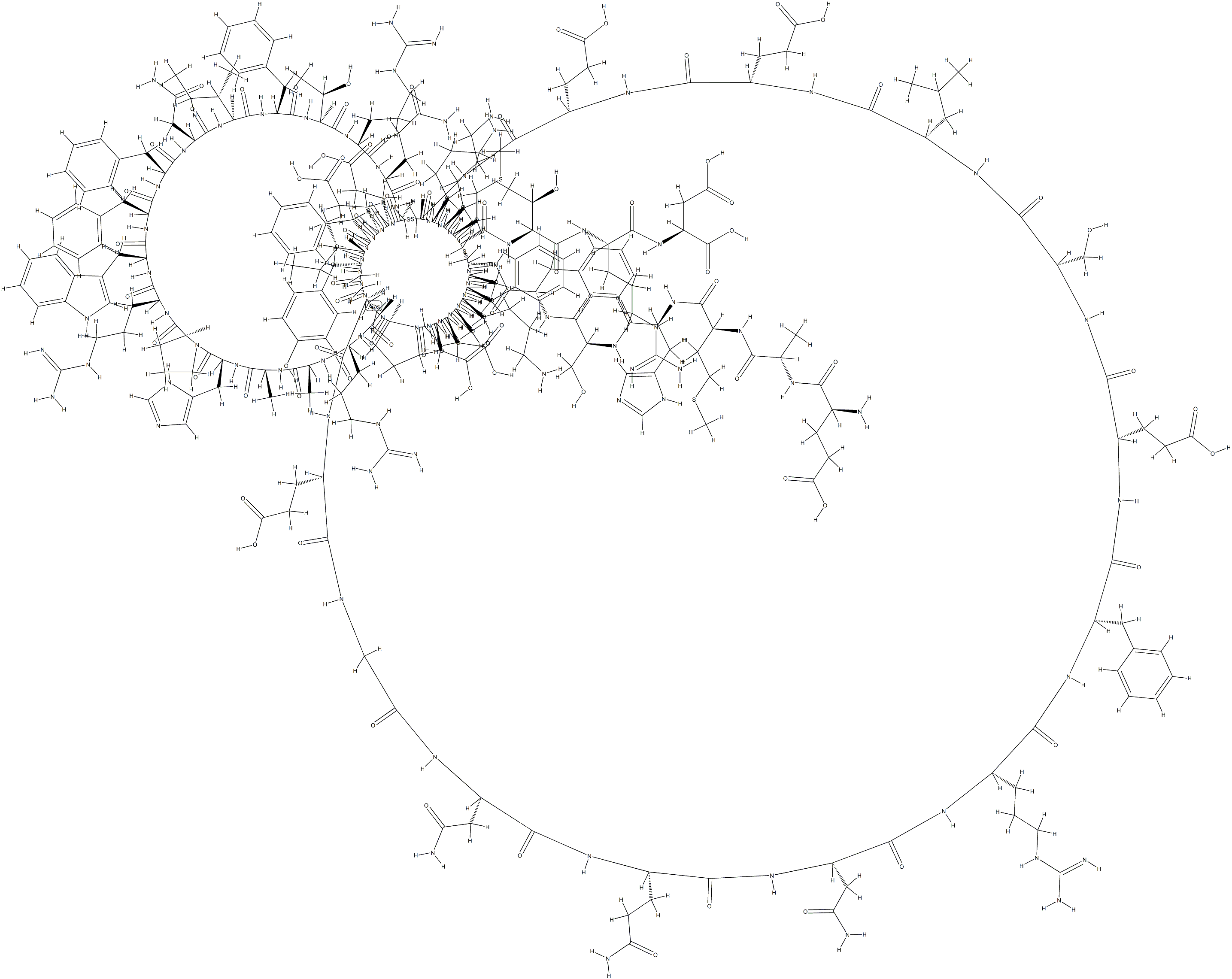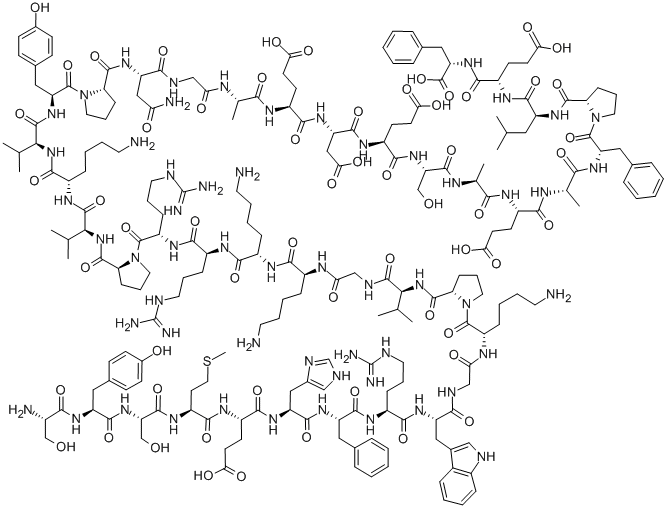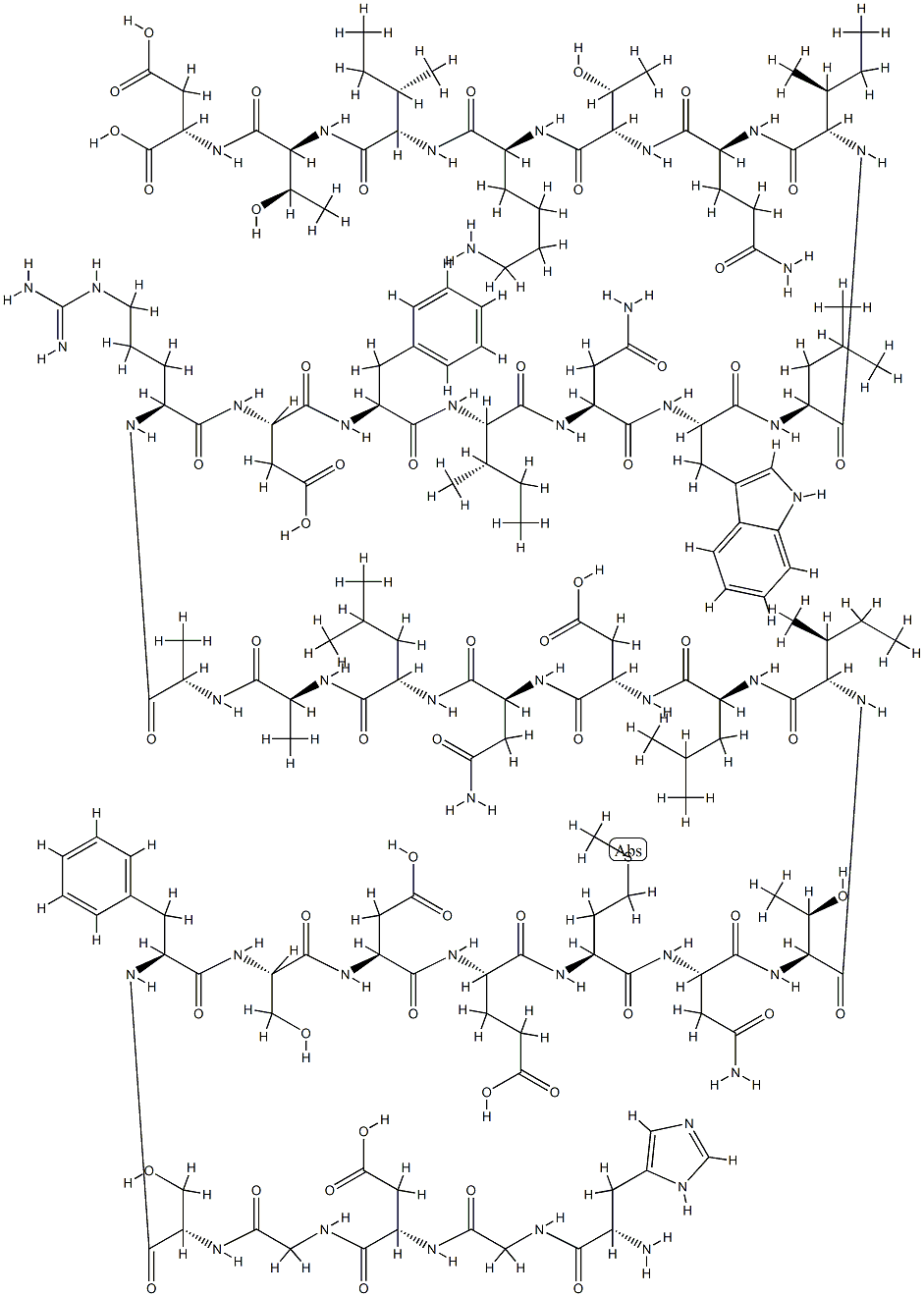ecallantide , 97%+ , 460738-38-9
PRODUCT Properties
| Sequence | Glu-Ala-Met-His-Ser-Phe-Cys-Ala-Phe-Lys-Ala-Asp-Asp-Gly-Pro-Cys-Arg-Ala-Ala-His-Pro-Arg-Trp-Phe-Phe-Asn-Ile-Phe-Thr-Arg-Gln-Cys-Glu-Glu-Phe-Ile-Tyr-Gly-Gly-Cys-Glu-Gly-Asn-Gln-Asn-Arg-Phe-Glu-Ser-Leu-Glu-Glu-Cys-Lys-Lys-Met-Cys-Thr-Arg-Asp (Disulfide bond:Cys1-Cys6, Cys2-Cys4, Cys3-Cys5) |
Description and Uses
Ecallantide, also known as DX-88, was approved in 2009 in the United States for treatment of hereditary angioedema (HAE), a condition characterized by episodic attacks of localized edema in cutaneous and mucosal tissues. HAE results from deficiencies or disorders of C1-esterase inhibitor protein (C1- 1NH). Mutation of the gene that encodes C1-1NH causes the lack or altered activity of the serine protease, C1-1NH. C1-1NH regulates the kallikrein–kinin (contact activation) and complement cascade systems. Ecallantide (DX-88) was designed to inhibit the action of plasma kallikrein. Ecallantide is a potent and selective inhibitor of plasma kallikrein with a Ki= 25 pM. The discovery program that identified ecallantide used phage display technology and a library of designed variants of the first Kunitz domain of TFPI. Ecallantide, a 60-amino acid peptide, with 3-disulfide bonds, differs from TFPI by 7-amino acids. Ecallantide has been developed as a subcutaneous administered formulation.
Treatment of hereditary angioedema; reduction of blood loss during cardiothoracic surgery (plasma kallikrein inhibitor).
Safety
| Hazardous Substances Data | 460738-38-9(Hazardous Substances Data) |




